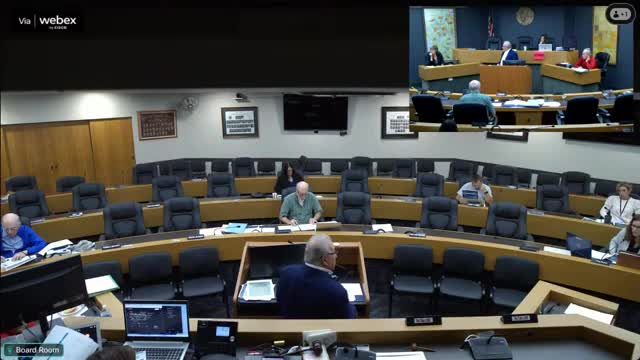Health insurance premiums surge amid rising claims crisis
September 26, 2024 | LaSalle County, Illinois
This article was created by AI summarizing key points discussed. AI makes mistakes, so for full details and context, please refer to the video of the full meeting. Please report any errors so we can fix them. Report an error »

In a recent government meeting, officials discussed the rising costs of health insurance premiums, driven by an influx of large claims. The underwriter presented a revised forecast, indicating that the anticipated premium increase for the upcoming year should be set at 12.6%, a significant adjustment from previous estimates. This revision comes in light of increased claim activity, which has raised concerns about the sustainability of the health plan.
Officials emphasized the importance of accurately setting premiums to ensure the plan operates within expected financial parameters. The goal is to avoid both undershooting and overshooting the target, which could lead to financial strain in the future. The discussion highlighted the challenges posed by large claimants, particularly among retirees, who have been identified as a significant factor in escalating costs.
The meeting also touched on broader trends in healthcare costs, with projections indicating an average annual increase of 8% in the coming years, marking the highest rise in healthcare expenses in over a decade. This trend is influenced by various factors, including utilization rates and the nature of claims being filed.
Participants acknowledged the historical context of health insurance, noting that prior to the Affordable Care Act (ACA), plans often imposed lifetime maximums on benefits. The removal of these caps has led to situations where individual claimants can incur costs exceeding $1 million, further straining the system.
As the discussion concluded, officials recognized the need for ongoing analysis of claims data to better understand the underlying causes of rising costs and to explore potential strategies for managing these expenses moving forward. The meeting underscored the delicate balance between providing comprehensive health coverage and maintaining fiscal responsibility in a challenging economic landscape.
Officials emphasized the importance of accurately setting premiums to ensure the plan operates within expected financial parameters. The goal is to avoid both undershooting and overshooting the target, which could lead to financial strain in the future. The discussion highlighted the challenges posed by large claimants, particularly among retirees, who have been identified as a significant factor in escalating costs.
The meeting also touched on broader trends in healthcare costs, with projections indicating an average annual increase of 8% in the coming years, marking the highest rise in healthcare expenses in over a decade. This trend is influenced by various factors, including utilization rates and the nature of claims being filed.
Participants acknowledged the historical context of health insurance, noting that prior to the Affordable Care Act (ACA), plans often imposed lifetime maximums on benefits. The removal of these caps has led to situations where individual claimants can incur costs exceeding $1 million, further straining the system.
As the discussion concluded, officials recognized the need for ongoing analysis of claims data to better understand the underlying causes of rising costs and to explore potential strategies for managing these expenses moving forward. The meeting underscored the delicate balance between providing comprehensive health coverage and maintaining fiscal responsibility in a challenging economic landscape.
View full meeting
This article is based on a recent meeting—watch the full video and explore the complete transcript for deeper insights into the discussion.
View full meeting
